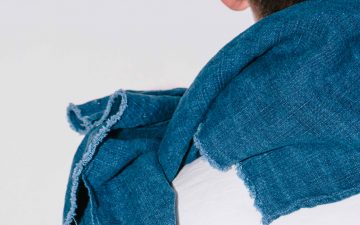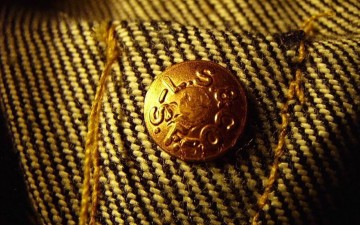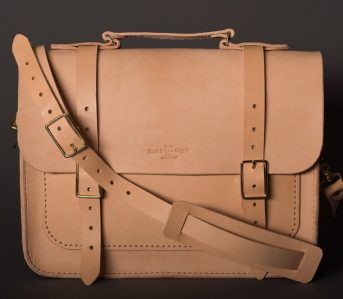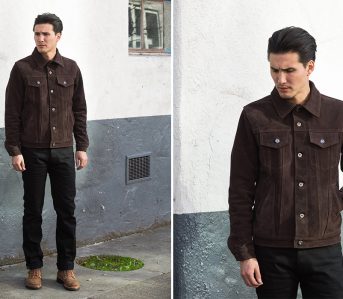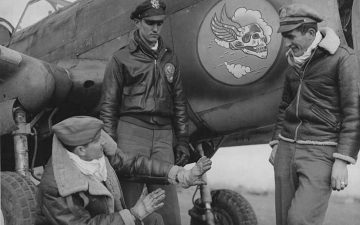Thank you for joining us for the second half of our comprehensive guide to flight jackets (click to read part one, American Flight Jackets From 1927 to 1946). Our story picks up where we left off, at the beginning of both the atomic and jet ages. The rugged leather flight jackets that had been rapidly churned out to align with the technologically unprecedented aircraft of World War II had by this point been mostly phased out.
At the end of our last article, test pilot Chuck Yeager had broken the sound barrier on October 14, 1947 beginning an entirely new age of flight for the United States Air Force. Within ten years, jets would be capable of flying over 1,000 mph, dramatically shrinking the distance between the now atomically-capable Cold War powers of the USA and USSR. In an age of potential nuclear holocaust, the leather-clad flying aces of World War II seemed suddenly quaint in their propeller-aircraft.
Test pilots of both powers were hurtling across the sky at supersonic speeds and would soon even direct their gaze upwards, out of the earth’s atmosphere. Jackets would need to be made to clad the warriors and explorers of a new, terrifying age as they simultaneously prepared to lay waste to their enemy and go boldly where no one had gone before.
L-2/ L-2A (1945 – 1949)
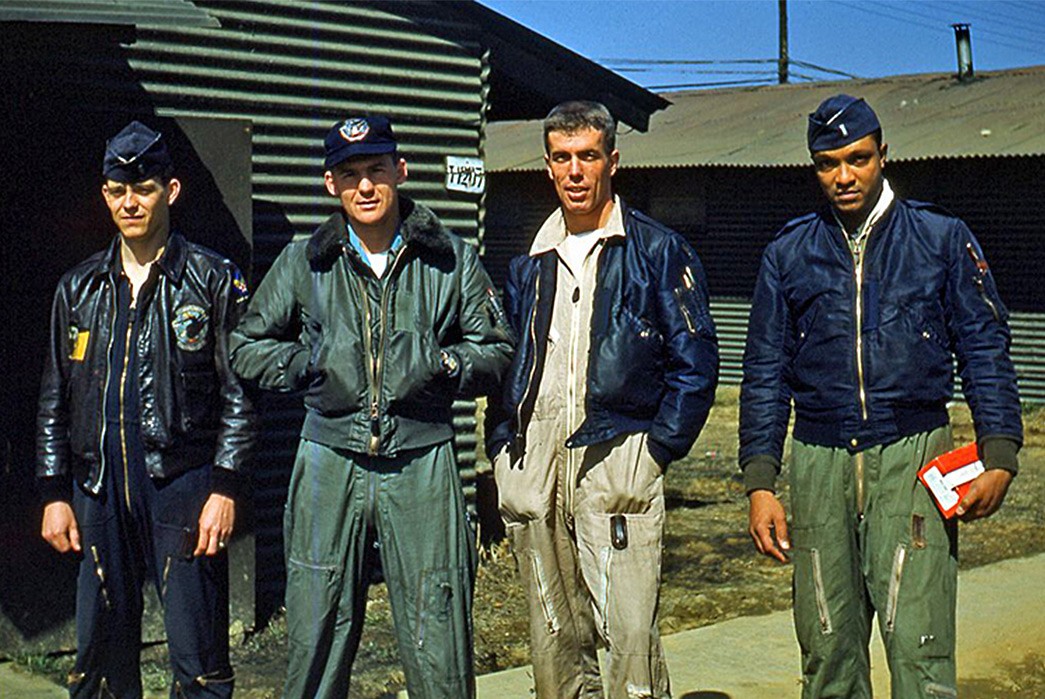
L-2A Flight Jackets on the two pilots on the right hands side. Image via Cold Smoke Co.
The first jacket widely distributed to the pilots of the jet age was the L-2 and despite its place in the history of military aviation, surprisingly little has been written about it. The experts at Buzz Rickson declare that it is “the most rare of all the U.S. Air Force nylon flying jackets.” The jacket came into being near the end of the war in 1945 and was produced until around 1949.
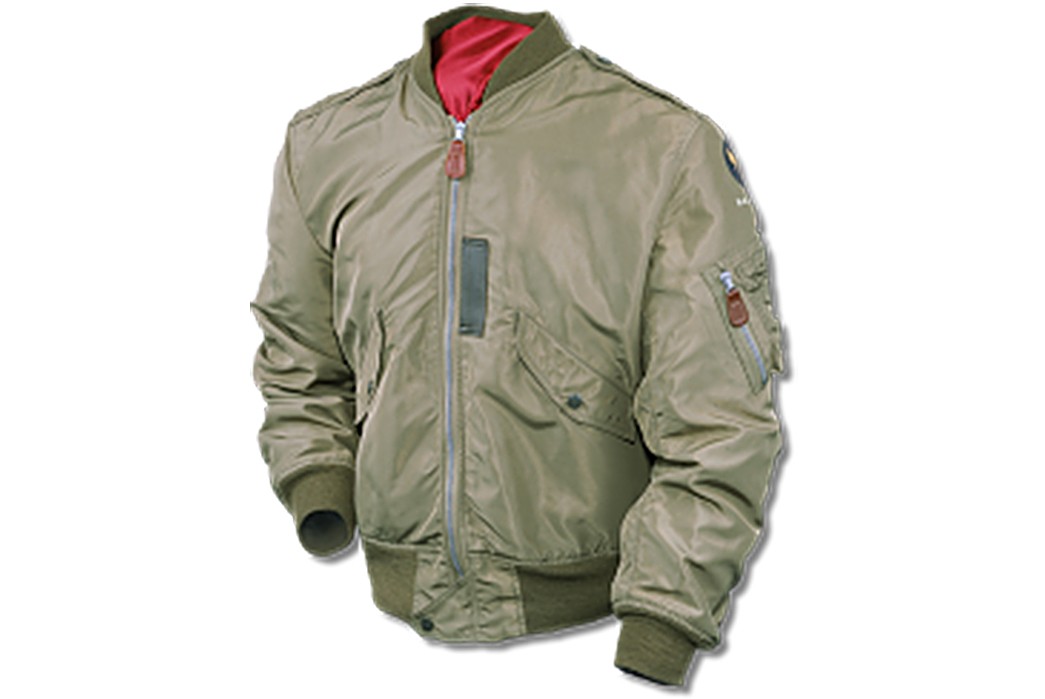
L-2 Flight Jacket. Image vie Buzz Rickson.
The reason for the L-2s scarcity is that it was superseded by an Air Force vanity project in the form of the L-2A. The L-2A was exactly the same as the L-2 in almost every regard except it was produced in a color suitably titled “Air Force Blue” in order to further distinguish the nascent USAF from the Army. As rare as the L-2 may be today, its blue brother, the L-2A had an even shorter production run.
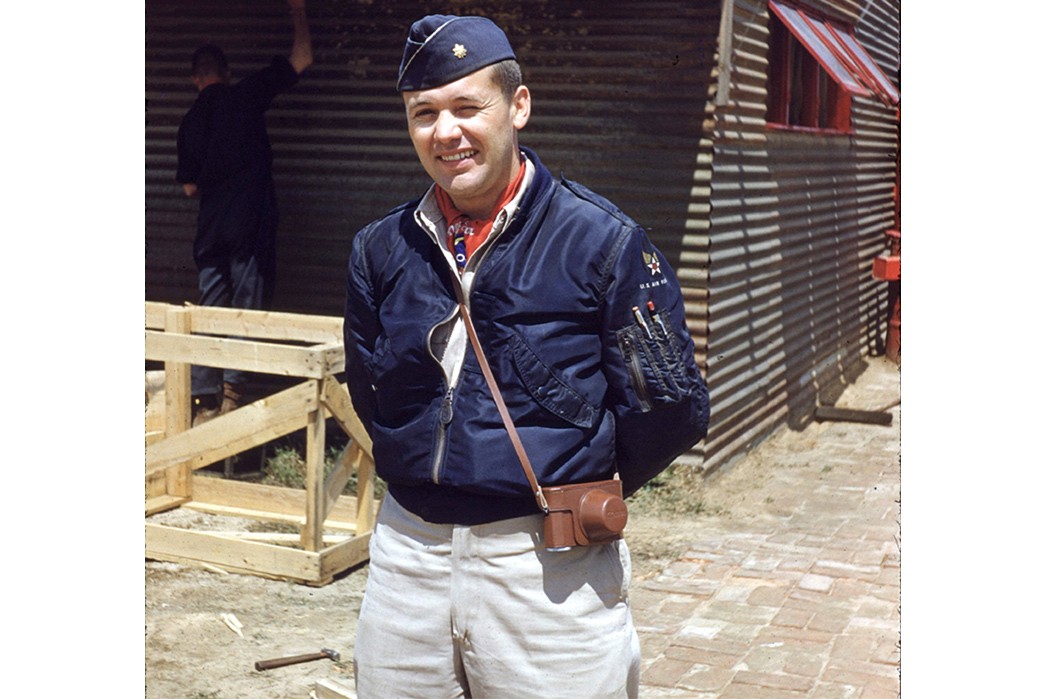
Major Robert C. Ruby doing some sight-seeing in his L-2A jacket. Image via Jet Pilots Overseas.
The L-2A arrived in 1950 just as American pilots were engaging in the first jet-on-jet combat in the skies above Korea, but it quickly became clear that a pilot stranded in enemy territory had a much better chance of making it home uncaptured if he was camouflaged in olive drab. Unfortunately enemy territory isn’t Air Force Blue.
Both jackets were made from nylon with wool knit collars, cuffs, and waist. The shoulders featured snap down epaulets and the left sleeve had a zip pocket and pen-holders. The last salient detail here is the small triangular snap at the waist, something important to look for later.
So similar are the L-2 and L-2A that the Buzz Rickson repros are exactly the same price on the History Preservation website. You can make either one yours for $410.
MA-1 (1950 – 1990)
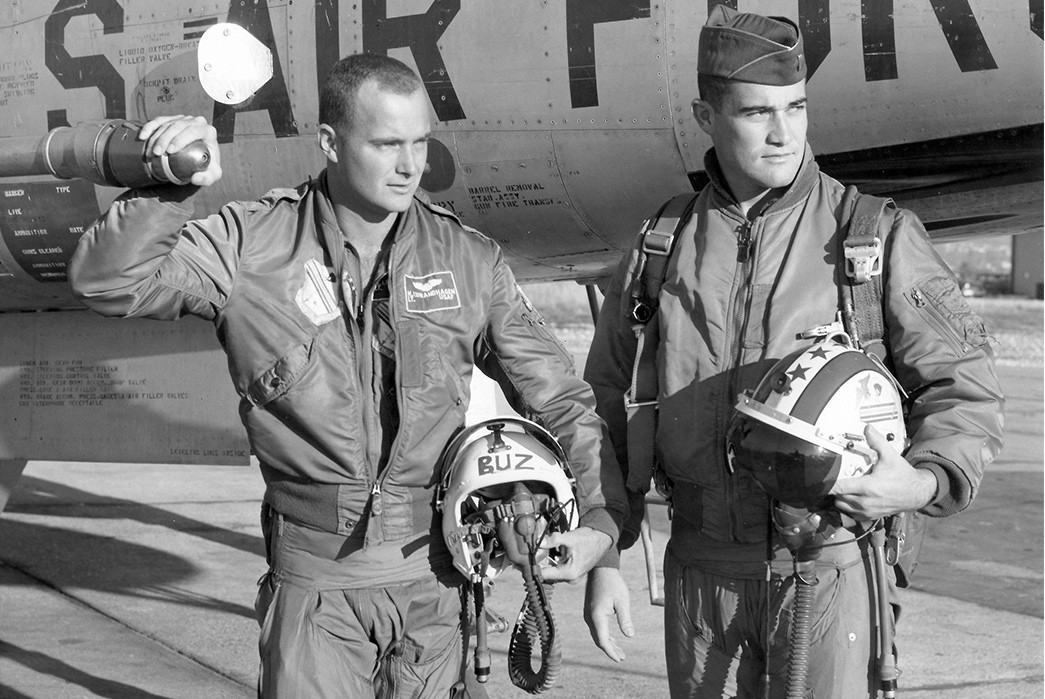
(Left to Right) L-2 and MA-1 Flight Jackets. You can tell by the missing epaulets. Image via Jet Pilots Overseas.
The next flight jacket, the MA-1, arrived in the cockpits of the same Korean War pilots around 1949 or 1950. What would prove to be another of the most beloved designs on the list was closely based on the B-15 jacket, albeit without the large fur collar.
While the MA-1 closely resembles the L-2 and L-2A jackets in color (the daring Air Force Blue and more conservative Olive Drab) and substance (high quality nylon with wool collar, cuff, and waist), upon closer inspection, there are a few minor changes. The MA-1 has no snap down epaulets on the shoulders, nor does it have the small triangular flap pockets that clasps closed at the center front of the waist band. Although these differences are minute, the MA-1 looks somehow more somber and more serious. Perhaps it’s then appropriate that these would be worn by the pilots conducting two of the most devastating American bombing campaigns in military history, those of the Korean and Vietnam Wars.
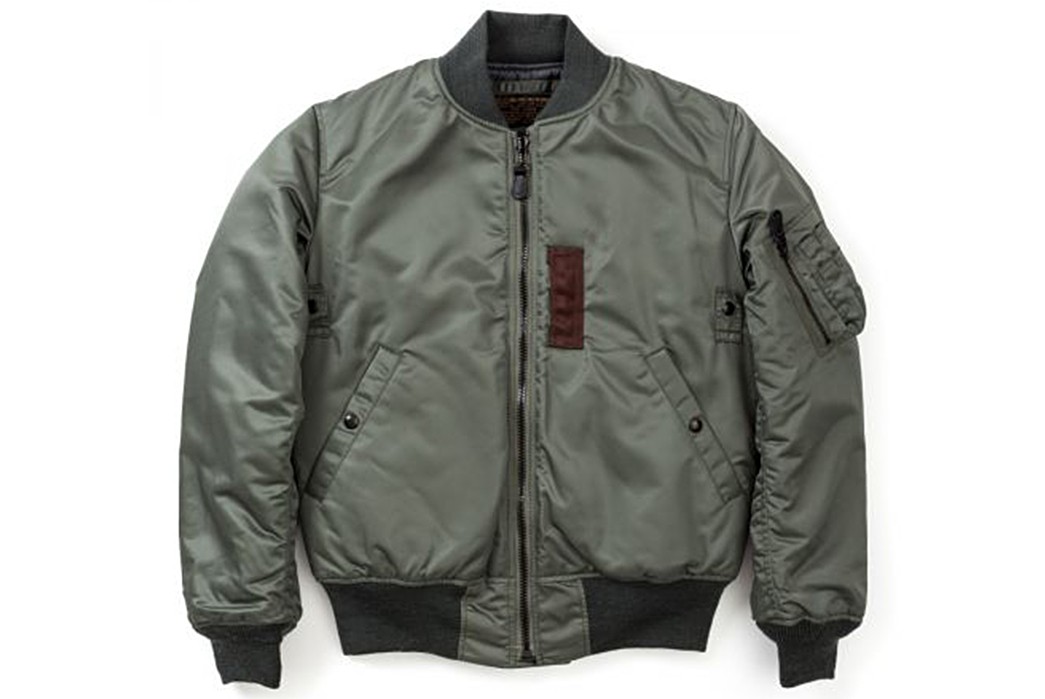
The Real McCoy’s MA-1 Flight Jacket. Image via The Real McCoy’s.
The MA-1 would remain in service until the 1980s and due to its lighter-weight nature, was a layering piece that quickly became popular for non-military folks as well. You can get your dirty, civilian hands on your own repro for $883 at The Real McCoy’s.
MA-2 or CWU 36/P and 45/P (1972 – Present)
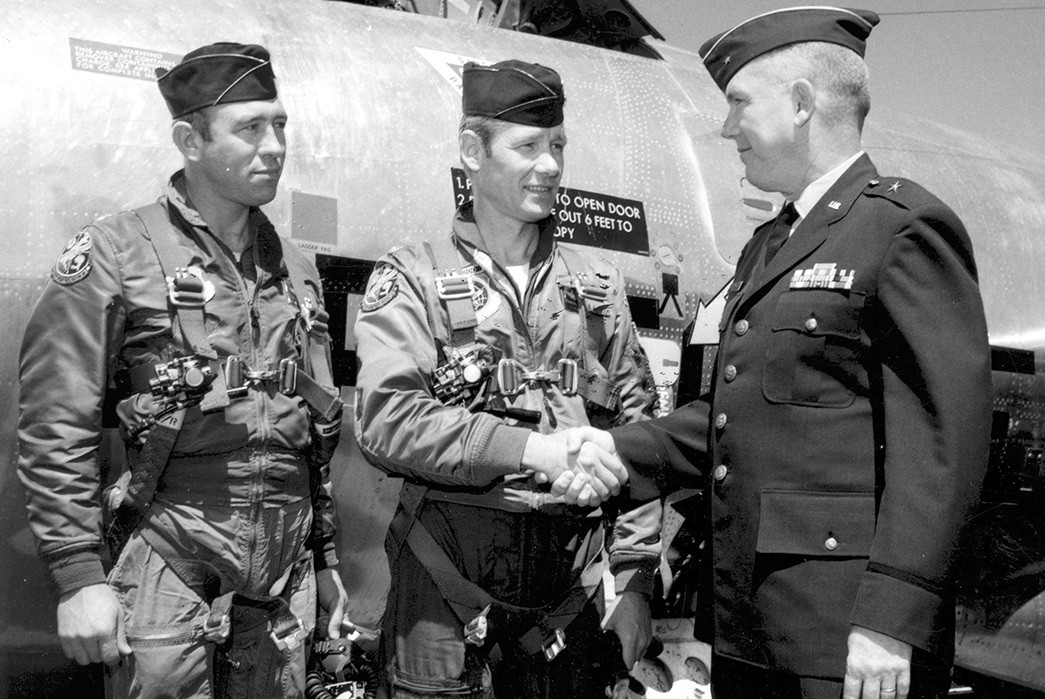
Brig. Gen William H. Best, Jr. shakes hands with two pilots in MA-2 jackets.
Uh oh, folks. Guess what the Air Force learned? Nylon burns. And what had the Air Force made the last several flight jackets out of? Why nylon, unfortunately.
This rather concerning technical issue was resolved in 1972 with the adoption of the MA-2 flight jacket, also known as the CWU jacket, which was made in two variations, the lightweight 36/P and more insulated 45/P. CWU stands for Cold Weather Uniform, but the new flight jacket was of course much more than that, the Nomex fabric from which it was made was flame retardant! That’s not all, Nomex also protects against chemical threats and to a degree, even radiation.
The 36/P was lighter-weight and the 45/P heavier, but they were fundamentally the same. But with the jackets’ new material, came two major design changes, namely the addition of large cargo pockets and the new rounded collar. The cuffs and waist stayed knit and the fit stayed largely the same, but it is the first of the late twentieth century flight jackets to be immediately recognizably different from the knit collar and slash pockets design.
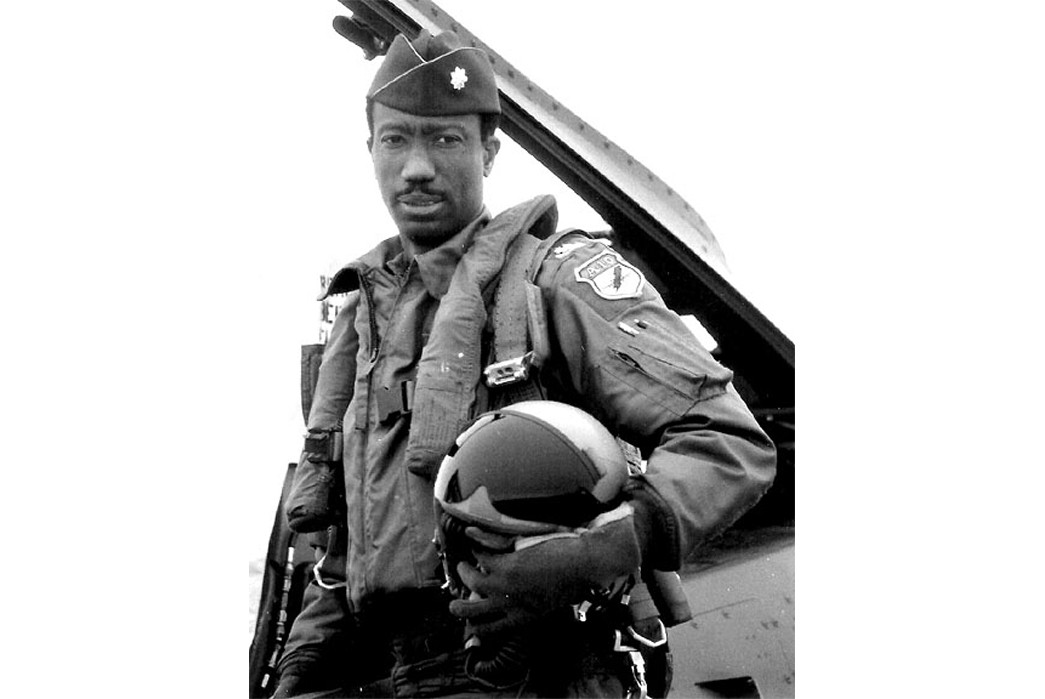
The collar of the MA-2 jacket peaks out from beneath this pilot’s gear. Image via Stripes.
The MA-2, in both its weights, is still the active duty flight jacket for the U.S. Air Force and U.S. Navy. Alpha Industries was first contracted to make these jackets for the Air Force in 1996 and they offer military-spec versions of the CWU 36/P and the CWU 45/P for $850.
Apollo Flight Jacket
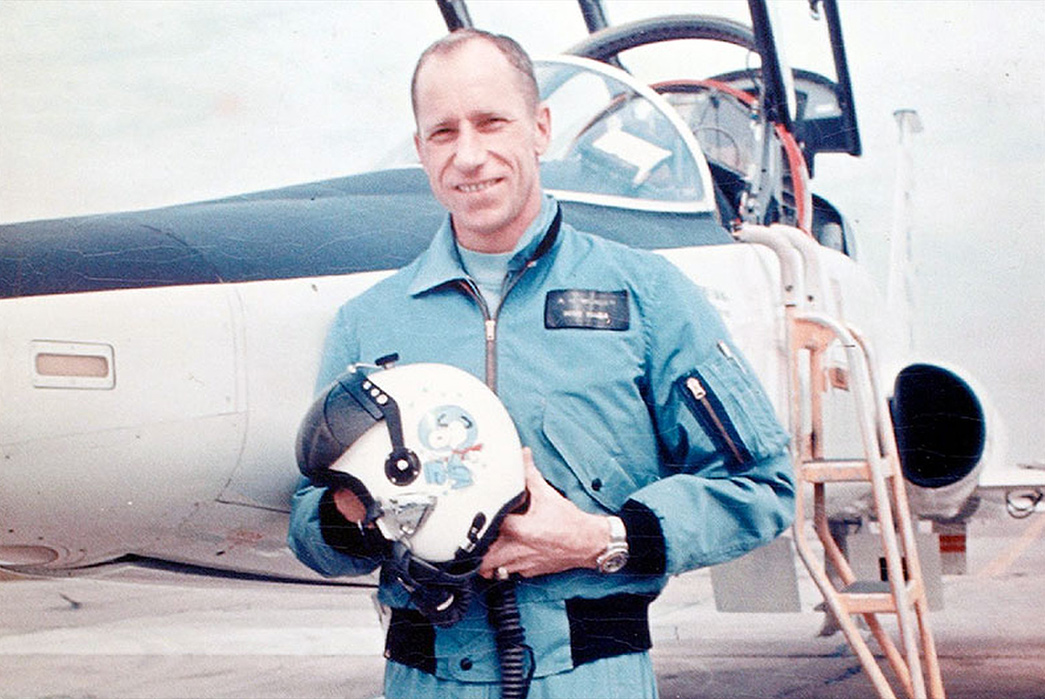
Apollo 15 Astronaut Al Worden in his “Apollo Flight Jacket.” Image via Space.
In the 1960s and 70s, America’s best and brightest wore the above jacket in their training missions to leave our atmosphere. Al Worden, above, missed his jacket so much after it wore out that he set out to recreate the original.
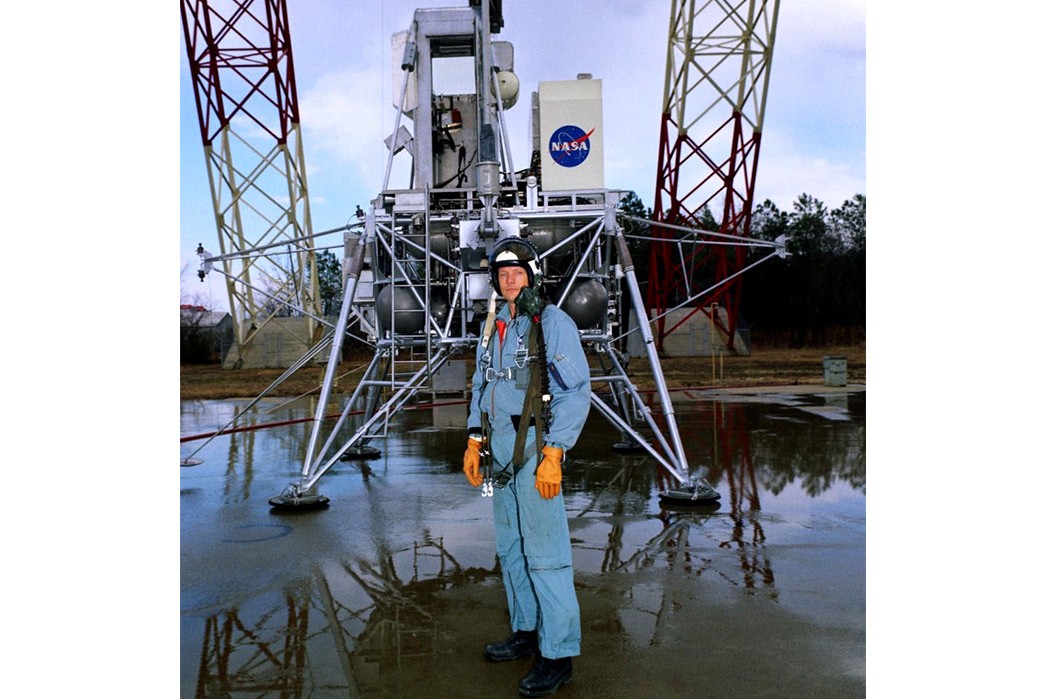
Neil Armstrong in the Apollo Flight Jacket. Image via The RPF.
The astronauts wore these jackets in training missions, flying in supersonic jets or visiting the far reaches of earth to study geology they might encounter on the moon.
The jacket is an absolutely delightful mix of all of the jackets discussed from the postwar era. It features a classic collar and front zip and is complemented by slash pockets with a clasping flap and the small triangular detail on the waist from the L-2. The fact that these pilots had no fear of landing in enemy territory allowed for a more vibrant blue and a lower weight cotton shell, although a “flame orange” rayon interior could be reversed if a pilot was downed and needed assistance. The jacket also features the arm pocket and the ubiquitous cuff and waist knitting, except in this edition, they serve as contrasting details, colored a darker blue.
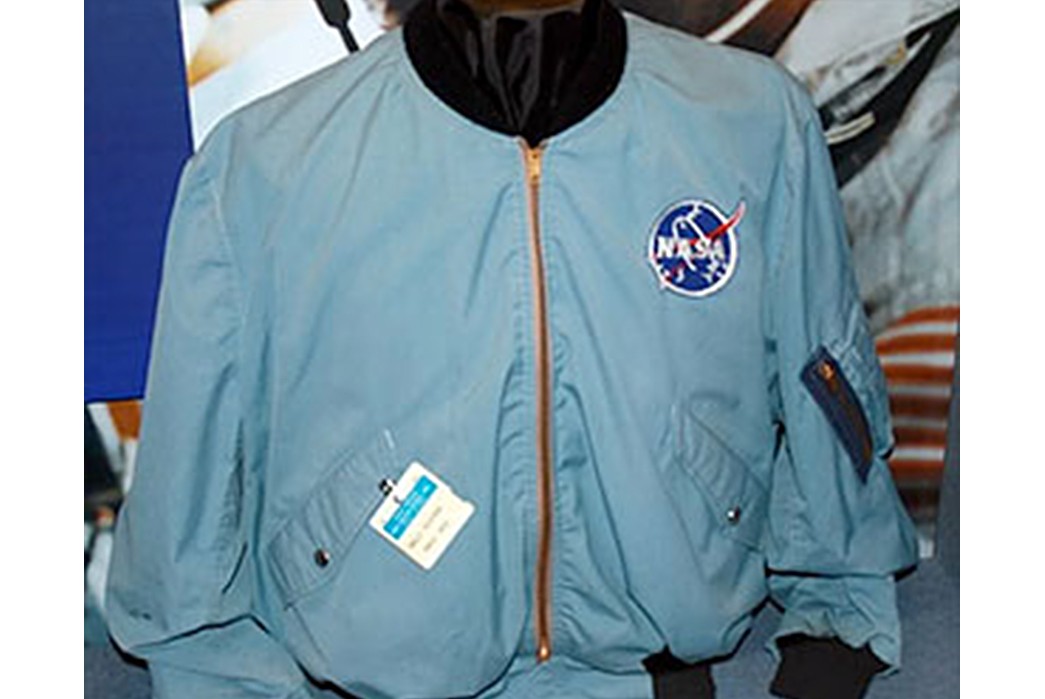
Actual Apollo Jacket from the Astronaut Hall of Fame. Image via Collectspace.
New clothing brand, Still The Right Stuff, was founded by Al Worden and a friend with the mission of making a 100% accurate reproduction of his favorite jacket. The textiles and dyes were reproduced and hardware was found from the original NASA contractor. Available for pre-order from for £375 Simmons Bilt.
This jacket feels like an appropriate way to close the second chapter of a century’s military fashion history. As humanity climbed relentlessly higher into our atmosphere and eventually even out of orbit, our clothes came with us, rising to the challenge. With the exception of a few flammable flukes, the flight jackets of America’s pilots have become some of the most practical and sought-after clothing items of all time.
No matter the outcome, be it victory or defeat, science or war, the flight jackets of the twentieth century reflect the exponential technological advances made since the dark ages of the Wright Flyer. Within their fibers there is still some of that magic of those early days of flight and the heroism of the first of us bold enough to take to the sky.

